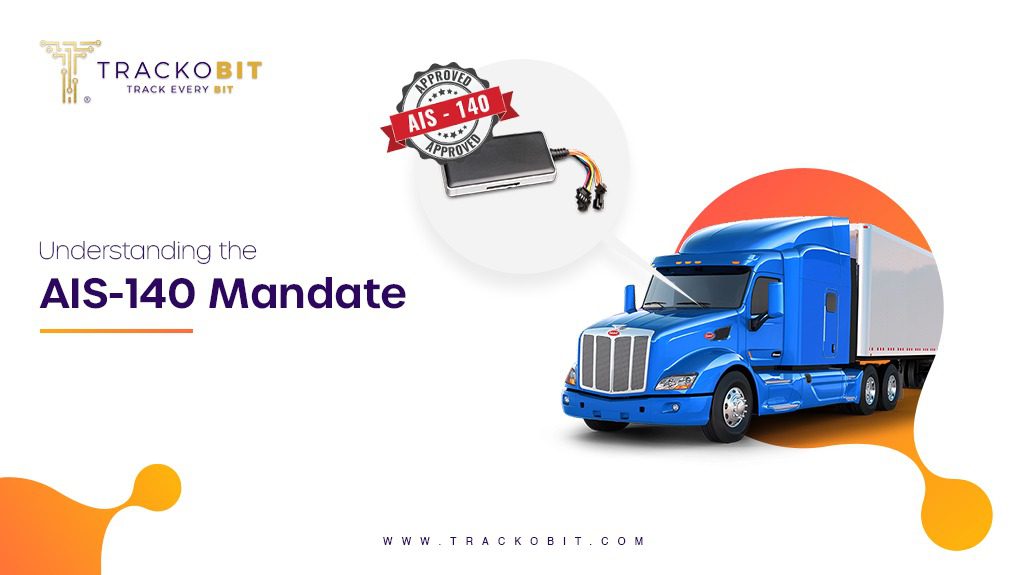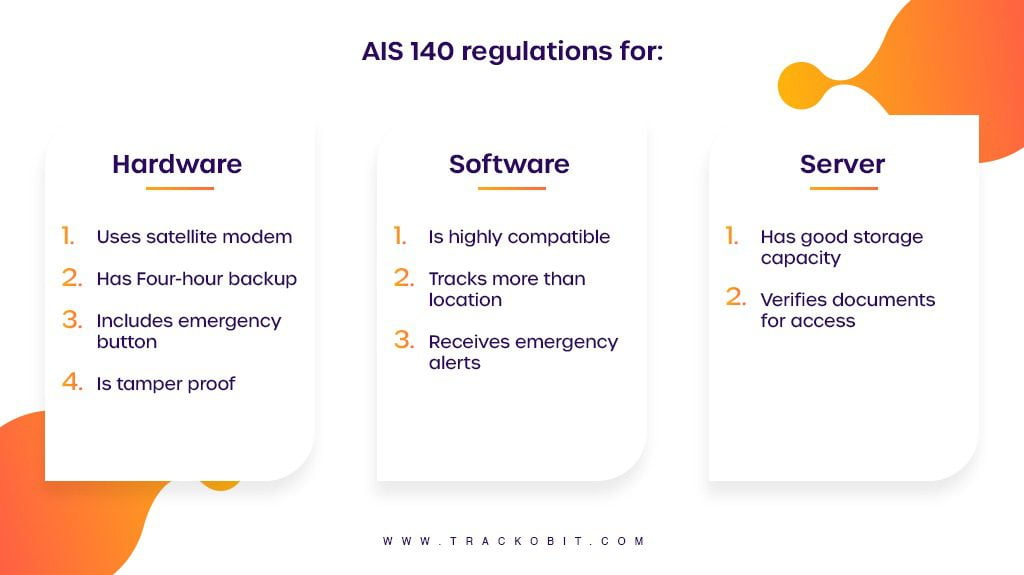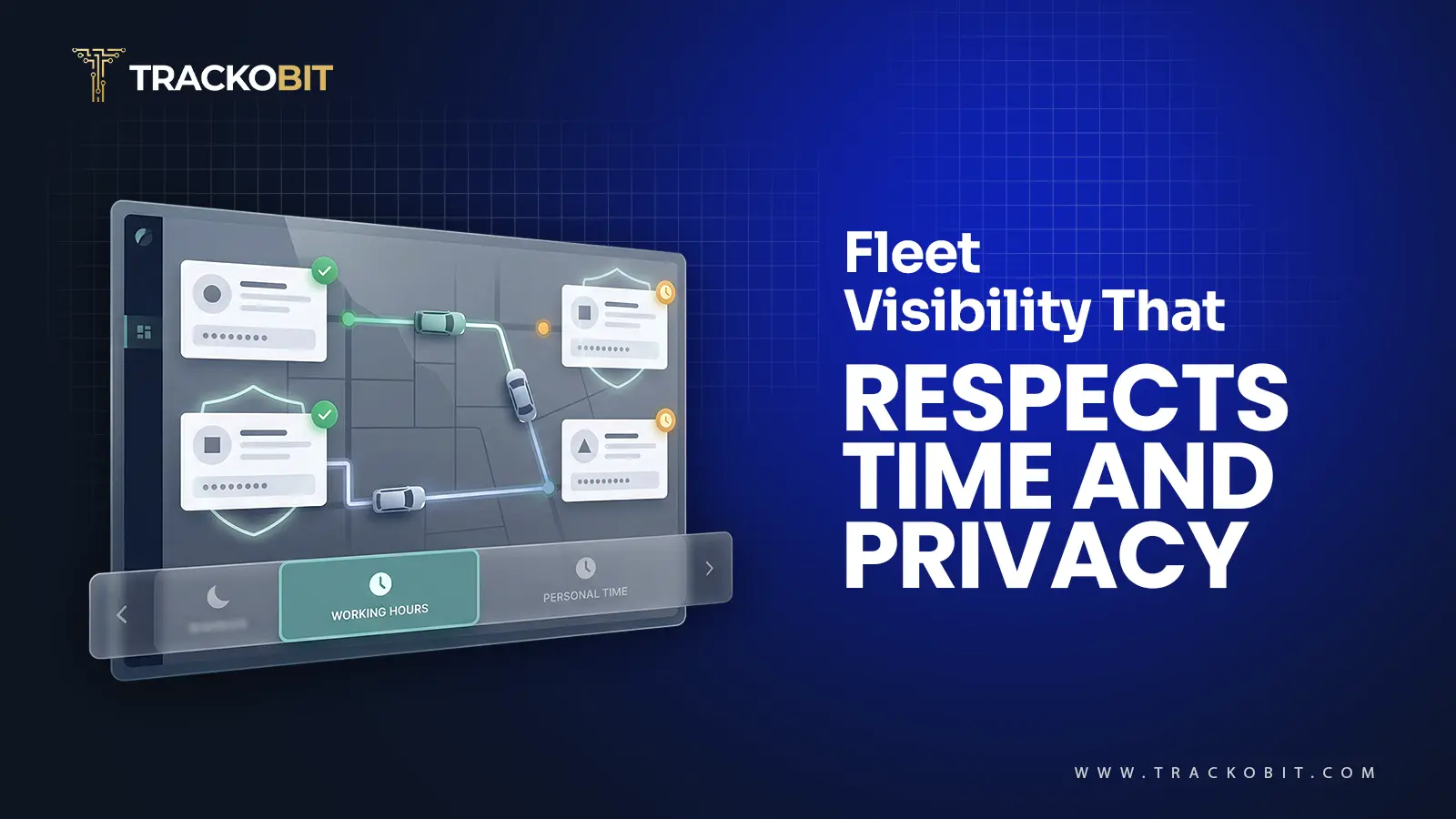-
TrackoBit
Manage commercial vehicles with the new-age Fleet Management Software
TrackoBit -
TrackoField
Streamline your scattered workforce with Field Force Management Software
TrackoField -
Features Resources
-
Blog
Carefully curated articles to update you on industrial trends. -
White Paper
Insightful papers and analysis on essential subject matters. -
Glossary
Explore an alphabetical list of relevant industry terms. -
What’s New
Get TrackoBit & TrackoField monthly updates here. -
Case Study
Explore the cases we solved with our diverse solutions. -
Comparisons
Compare platforms, features, and pricing to find your best fit.
-
About Us
Get to know TrackoBit: our team, ethos, values, and vision. -
Careers
Join the most dynamic cult of coders, creatives and changemakers. -
Tech Support
Learn about our technical support team and services in detail. -
Events
Check out the exhibitions where we left our marks and conquered. -
Contact Us
Connect with us and let us know how we can be of service.
What Is AIS 140 and Why is it Mandatory in India?
- Author:Drishti Dua
- Read Time:7 min
- Published:
- Last Update: May 27, 2025
Table of Contents
Toggle
In the last couple of years, the Indian government has taken pivotal steps toward optimising the transportation industry. The aim is to bring Indian Logistics to global standards.
Table of Contents
Toggle
Introducing AIS 140 mandate was one of the initial endeavours to match Intelligent Transportation System(ITS) standards.
With up to 35% of all road accidents being bus related, it feels almost essential, doesn’t it?
Don’t know what AIS 140 is? Well, you have come to the best place for information. Before we try to see how this mandate came into action, let us understand just what these regulations entail.
Track shipments, optimise delivery routes, reduce risks across the multi-modal journey.
What is AIS 140? Why is it Mandatory?
AIS, short for Automotive Industry Standard, are the regulations released by the Automotive Industry Standard Committee (AISC) in collaboration with the Ministry of Road Transportation and Highways (MoRTH).
These guidelines were created with the intention of both increasing road safety and also creating an intelligent transportation system. So what exactly are these guidelines that commercial vehicles have to follow? The regulations target several different aspects that go into the GPS tracking industry.
All the instructions under these mandates are very extensively detailed. But here are the most important guidelines you should definitely know about simplified, especially when running a fleet:
AIS 140 Regulations for Hardware
For the hardware, the ministry has the following rules. Not adhering to these rules can lead to not just heavy fines, but also suspension of transport permits. The regulations generated for the hardware aspect of the system are:
- Vehicles should use a modem for information transmission. While many GPS systems also use cellular data or SIM cards, these regulations insist on the use of satellite modems a.k.a GPS Trackers
- The GPS Tracking device should have a backup of at least 4 hours.
- It is necessary to install an emergency button in the vehicle. This system should send data like the location to two IP addresses. One of them being a government database and the other one being an emergency support system.
- The device should have good security. They should be tamper-proof so that there is no way of incorrect data entering the database.
AIS 140 Regulations for Software
Along with the hardware, regulations also have a lengthy list of requirements for the software part of GPS tracking. Some of the important rules thus introduced are:
- Compatibility should be a huge part of the reason for choosing software to track your AIS 140-certified GPS device. It should be able to connect with the trackers described above.
- The system should be able to track more than just the vehicle’s location. It should have records of a vehicle’s performance, maintenance, and more
- Managers of the system should receive emergency alerts. In case of no internet available, the alerts should be sent out via SMS.
AIS 140 Regulations for Server
The server or the cloud that is responsible for storing data collected by the GPS device has its own checklist of standards it has to meet. These standards ensure that all fleet operations are data-driven for better safety and accuracy. Some of these regulations include:
- The system used with GPS trackers should have a good storage capacity. They should store the vehicle’s data for at least 90 days after the occurrence.
- The documents of vehicles and drivers should be verified before giving access. This adds an added layer of security.

When Did the AIS 140 Mandate Come into Force?
Starting with the ruling of adding emergency buttons to all vehicles in 1989, the AIS 140 guidelines have come a long way. They have incorporated several new technological developments to ensure safe roads.
In 2018, the guidelines that had been developed over the years were made mandatory for all public transportation buses. It was only in April 2019 that it was standardised for the entire public transport sector. But then too, these developments were not done for private or commercial vehicles.
In August 2022, the government recognised the need for AIS 140 in the commercial sector, making it a mandate for all N2 and N3 vehicles, and vehicles transporting hazardous goods. Manufacturing companies need to add GPS devices to the new vehicle models by September 2022. Pre-existing models also need to comply with them by January 2023.
Advantages of AIS 140 Mandate
So how can the widespread use of the AIS 140 regulations change how vehicles travel on the roads? On the negative side, fleet businesses that have been using GPS tracking software for their operations need to see if their devices meet the criteria the government has set. If the answer to that is no, then they will be forced to invest in devices.
But the positive impact of this system way overshadows the negatives:
- Higher Demand for GPS: With so many sectors affected by these guidelines, there is bound to be an influx in the demand for both GPS devices and software. This means a growth in the number of connected vehicles on the roads. The prediction about 55% of all commercial trucks being connected by 2025 seems all the more achievable now.
- Boost in Safety: Integration of emergency buttons in all public transportation vehicles leads to a lower chance of fatalities in case of accidents. But the vehicle maintenance and GPS tracking, the accident rate itself also come down. A study shows that 42% of fleets using GPS tracking saw a decrease in their accidents.
- Higher Visibility: When operating in a large fleet, it is usually very difficult for managers to keep track of all their vehicles. But when GPS is added to the operations, it becomes easier to know the location and activities of every vehicle.
- Optimisation: The AIS 140 regulation states the importance of maintaining vehicle health and the need for good driving practices. This encourages fleets to focus on holistic optimisation for the fleet instead of simply tracking their vehicle’s location.
Try TrackoBit to plan better delivery routes, generate quick ePODs, and reduce ETAs.
What Role Does Fleet Management Software Play in the Execution of AIS 140 in India?
When we look at a fleet management system, its core value is to help fleet businesses ensure smooth and planned operations. Thus, the software, often a part of the fleet management system, helps managers target specific parts of their fleets’ functioning and then work on eliminating issues they might encounter.
Data plays a large part in this process. Without understanding the issue, fleet businesses cannot work on correcting them. TrackoBit is a fleet management software that not only helps businesses plan their fleet operations but also helps adapt them to the AIS 140 regulations. Some ways this is made possible are:
- Device Compatibility: TrackoBit is compatible with a large range of protocols. This means that even with a change in the type of GPS tracker you choose, your software will not require modifications. It also has the option to add an emergency button to your vehicle for the necessary layer of security.
- Multi-dimensional Solution: All the features that this software offers allow businesses to execute long-term changes to make their fleets safer. They help keep the vehicles healthy and profitable. Thus, your fleets and our system are a match made in heaven.
- Saves History: As we already learned, optimising a fleet is impossible without knowing its pain points. TrackoBit offers a history of vehicle activities for up to six months. This is way higher than the 90-day mandatory requirement. This data helps managers understand the shortcoming of the fleet and work on them.
- Customisable Alerts: All the solutions offered by the software allows fleet businesses to choose the kind of alerts they want to receive. Alerts allow managers to take immediate action in case of emergencies.
Download the Latest AIS-140 Draft Now!
Get the latest transport system standards straight from the source.
Coming to an End
With the addition of AIS 140, fleet businesses can take a step towards automation. The features we have mentioned above hardly graze the tip of the iceberg of what is fleet management software can do. It helps businesses cut down their operation costs and also increases their productivity.
While very similar in operations, most fleets have unique requirements. This is why TrackoBit allows users to customise what solutions they want to invest in. Well, the mandate is here to stay, so why not try testing out the system and its features for yourself?
Track Fleet in Real-Time
Still stuck with manual operations? Automate your fleet operations and keep vehicles and equipment uptime at 99.9%.
Don’t believe us?
AIS 140 FAQs
-
How to apply for AIS 140 certification?
Transporters need to ensure that all the components of their vehicles are meeting the standards set by AIS 140 regulations issued by MoRTH. Here is a general list of steps businesses need to follow to get their AIS certificates: 1. Prepare the application documents and then rereview them 2. Submit application 3. Conduct tests for getting AIS certification 4. Call for a factory inspection 5. Get the AIS standard certificate after passing tests 6. Mark and label vehicle components accordingly
-
How long is the AIS 140 certificate valid?
After the certificate is issued, an audit will be conducted every two years. This is to ensure the devices are being made keeping the AIS 140 regulations in mind. In addition, companies are required to test out randomly selected device samples.
-
What devices are approved by ARAI according to the AIS 140 standard?
The Automotive Research Association of India (ARAI) has released a list of vehicle tracking systems that are AIS 140 approved.
-
What is the penalty faced in case of non-compliance?
The mandate has been launched for all commercial and public transport vehicles. Any vehicle falling in this category found without AIS 140 certificate is at risk of paying steep fines. They can also face disqualification of their transportation permit.
-
How is a normal GPS device different from AIS-140 approved devices?
Normal GPS devices project their data to only one IP server. But a device of AIS 140 standard is required to send data to two IP addresses at the same time. These devices also track a vehicle’s performance and maintenance as opposed to the normal ones that track only location.
Drishti Dua, a Content Contributor at TrackoBit has a rich background in literature and professional expertise in SaaS and technology writing. She has carved her niche in the space of Geospatial techn... Read More
Related Blogs
-

When Tracking Needs a Clock: Rethinking Fleet Visibility
Tithi Agarwal December 24, 2025Read on to understand why fleet tracking works better when it follows working hours. Because visibility should support operations, not…
-

What Makes TrackoBit’s Video Telematics Software Truly Next-Gen?
Shemanti Ghosh December 17, 2025TrackoBit’s video telematics software blends smart video intelligence with full server control. The result? Superior fleet reliability and safety.
-

Plug, Pair, Perform TrackoBit Introduces BLE Sensor Integration
Tithi Agarwal November 26, 2025TrackoBit’s BLE Sensor Integration enables wireless, real-time monitoring with faster installs and accurate insights. It improves fleet efficiency, visibility, and…
-

How to Use Driver Behavior Reports as a Sales Hook to Close Big Fleets
Tithi Agarwal October 16, 2025TrackoBit’s driver behavior reports empower fleet providers to win big contracts by showcasing safety, efficiency, and measurable ROI.

Subscribe for weekly tips to optimize your fleet’s potential!
Your inbox awaits a welcome email. Stay tuned for the latest blog updates & expert insights.
"While you're here, dive into some more reads or grab quick bites from our social platforms!"Stay Updated on tech, telematics and mobility. Don't miss out on the latest in the industry.
We use cookies to enhance and personalize your browsing experience. By continuing to use our website, you agree to our Privacy Policy.

































